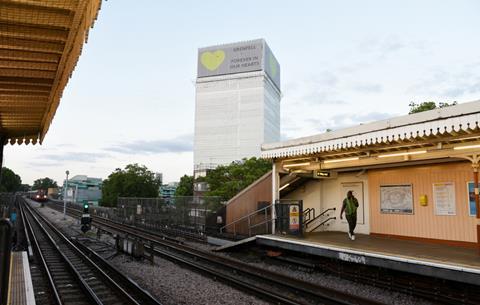New figures show nearly 300 blocks have yet to have dodgy ACM cladding removed
Government figures have revealed that at the end of February 280 high-rise residential buildings across England still have aluminium composite material cladding systems which do not meet Building Regulations and which have yet to be removed in the wake of the Grenfell fire.

More than 18 months after the fire at Grenfell Tower in west London in which 71 people died the government said 117 high-rise social sector buildings and 163 private residential towers had unsuitable cladding.
Of the social sector towers, 84 have had work start on them, 32 have a replacement plan in place but no work has taken place and in the remaining case building owners have stated their intention to deal with the issue.
Owners of private sector residential towers have said remediation work has begun on nine towers, plans are in place for 85 buildings, 32 have reported an intent to carry out work and are drawing up plans.
The status of remediation work on the remaining 37 towers is unclear, the MHCLG said.
A statement from MHCLG said enforcement notices had been issued to owners of those buildings where details of plans to remove ACM cladding had not been outlined.
The government said it had tightened its questionnaire to building owners “to provide increased precision in answer options concerning the status of remediation”.
Three local authorities – Greenwich and Tower Hamlets in London and Salford in Manchester – have in excess of 20 social and private sector high-rise residential buildings and publicly-owned buildings with ACM cladding systems that are unlikely to meet Building Regulations.
Communities secretary James Brokenshire last year threatened developers with fines if they did not carry out remediation work on affected properties and later called on local councils to do the job and claim back the costs from the building owners.







No comments yet